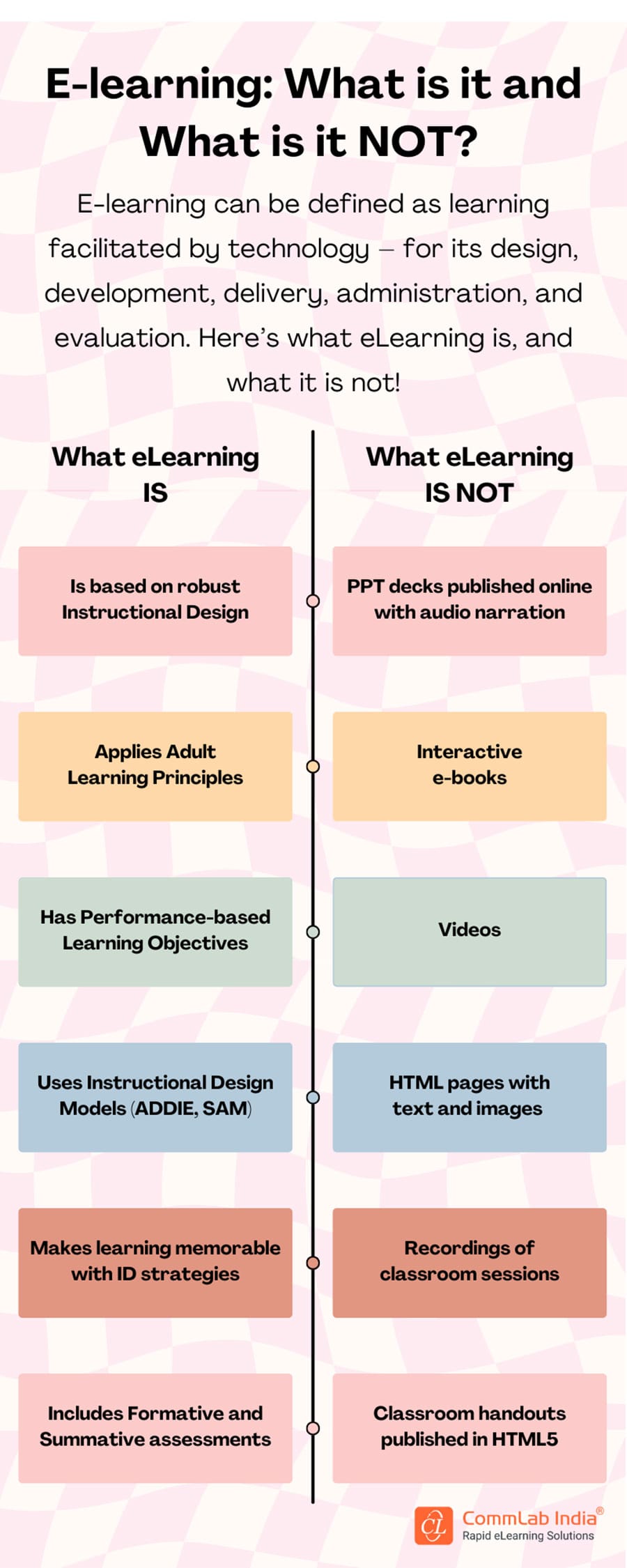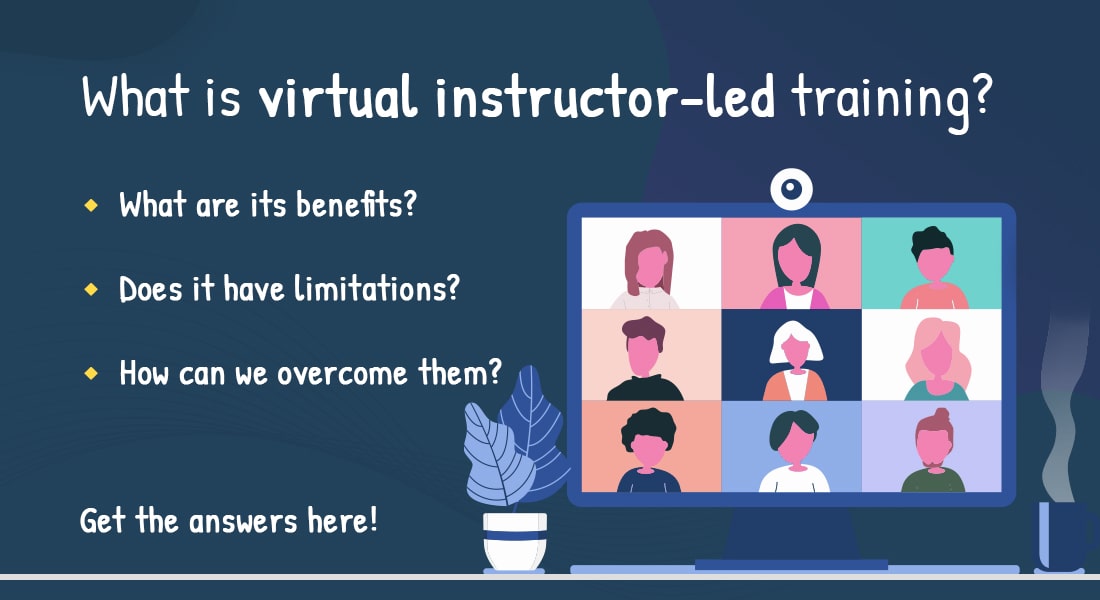What is eLearning and What It Is Not? [Infographic]
![What is eLearning and What It Is Not? [Infographic] What is eLearning and What It Is Not? [Infographic]](https://blog.commlabindia.com/hubfs/blogs/elearning-what-it-is-and-not-infographic.jpg)
In the quickly changing world of business and accordingly changing world of corporate training, staying ahead of the curve is not just an advantage... it's imperative. However, living in the digital age makes traditional training methods a thing of the past. Why? Because information is available at our fingertips and technology is evolving at a breakneck speed.
If you're thinking what to do now? I’d like to remind you, every problem has a solution. And in this scenario, solution is eLearning. It’s innovative, effective, and well-suited for modern-day learners.
→ Download Now: Instructional Design Strategies to Design Engaging eLearning Course
In this blog, we'll start with the basics where we'll clearly differentiate between what eLearning is and what it is not. Then we’ll understand about the benefits of eLearning in corporate training. Interesting, isn't it? So without any delay, let’s begin.
What eLearning IS and what is it NOT?
Benefits of eLearning in Corporate Training
The benefits of using eLearning for corporate training are manifold. It has transformed the way organizations onboard employees, disseminate knowledge, and upskill their workforce.
Offers Flexibility and Accessibility
With eLearning, employees can access training materials anytime, anywhere. This enables them to break free from the constraints of classroom training such as fixed training schedules and specific location. Whether it's a sales executive attending a product demonstration or a remote team honing their project management skills, eLearning accommodates diverse learning preferences, pace, and working schedules.
Increases Cost-Efficiency
Traditional training methods often incur hefty expenses in terms of venue rentals, travel allowances, instructor fee, and printed materials. In contrast, eLearning significantly reduces overhead costs by eliminating the need for physical infrastructure, travel, and printed training material. It's possible because the eLearning courses are delivered through digital platforms.
Fosters Engagement and Interactivity
One of the unmatched benefits of eLearning is that it fosters learner engagement and promotes active participation. Engagement takes place through incorporation of multimedia elements such as audio, animations, video, graphics, infographics, etc. For interactivity and participation, eLearning courses include quizzes, scenarios, click-throughs, match the following, sorting, and more. These elememts provide the learners with opportunity to be involved in the learning process, thereby tranforming it from passive to active learning.
Enables Performance Tracking and Analytics
To track learner progress in traditional training sessions, the best you can do is ask questions. A person who might have been paying full attention might not be able to answer whereas somebody who might have been distracted most of the time could answer it correctly. This is similar to shooting in the dark as there is no precise way to analyze the learner progress in classroom training. However, eLearning platforms enable you to access learning analytics. From tracking completion rates and assessment scores to identifying areas of improvement, data-driven insights allow you to fine-tune your training strategies and optimize learning outcomes.
Wrapping It Up!
By making the most of technology, eLearning offers an effective and efficient alternative to traditional training methods. It represents a paradigm shift in the way corporate training was conducted. Along with technology, innovative instructional design strategies also play an integral role in augmenting learner engagement and training ROI. Want to learn more about instructional design strategies to level-up your training courses? Here’s a free eBook for you. Check it out below!





![Designing Interactive eLearning Made Easy with Adobe Captivate [Infographic]](https://blog.commlabindia.com/hubfs/blogs/adobe-captivate-design-interactive-elearning-info.jpg)

